-
Membership
Membership
Anyone with an interest in the history of the built environment is welcome to join the Society of Architectural Historians -
Conferences
Conferences
SAH Annual International Conferences bring members together for scholarly exchange and networking -
Publications
Publications
Through print and digital publications, SAH documents the history of the built environment and disseminates scholarship -
Programs
Programs
SAH promotes meaningful engagement with the history of the built environment through its programs -
Jobs & Opportunities
Jobs & Opportunities
SAH provides resources, fellowships, and grants to help further your career and professional life -
Support
Support
We invite you to support the educational mission of SAH by making a gift, becoming a member, or volunteering -
About
About
SAH promotes the study, interpretation, and conservation of the built environment worldwide for the benefit of all
Iceland, and Moving West
Adil Mansure is the 2022 recipient of the H. Allen Brooks Travelling Fellowship. All photographs are by the author, except where otherwise specified.
As I begin to write a few words on my notepad, and then on my laptop, I realize just how odd this act is: writing for an oral history project. I had proposed to SAH to travel to sub-Arctic regions around the world, a circumpolar journey, where I would seek to speak to the knowledge-keepers and elders of various Indigenous communities and Nations about the (sustainable) architectural knowledge that lay intertwined in their stories, myth, and worldviews. Their traditional and ecological knowledge is rich, holistic, and not-siloed into narrow knowledge domains; architecture, too, is merely a phase in the life-cycle of carbon-chemistry, food, clothing, energy, and shelter. A key feature of Indigenous knowledge is that it emerges as a way to relate to the environment in a culture of care (and not in cultures of profiteering, extraction, or ownership). Passed down through thousands of years, their knowledge owes much to an oral epistemological format. It is precisely in its ‘unwritten-ness’ that its adaptability—and indeed sustainability—lies, making it invaluable in mitigating change pertaining to climate, migration, and resource management in built space. Thus the need for an oral history. This tension between orality and writing, I do not expect it to fade. Rather, it can be the site of much creative endeavor. I continue to bear with and engage with this tension as I travel, think, talk, and write.
Perhaps it is this oddity of writing about orality that has led me to begin my travels in Iceland, an island with a rich oral culture but also one with incredibly rich traditions and practices of writing. Not only does it’s cultural history boast Medieval literary masterpieces such as the Sagas and Eddas, but, as a micro-historian I spoke to in Reykjavik argued, writing and recording one’s story with words was a common occurrence in the everyday life of Icelanders in the 19th and early 20th centuries.1 This is also evident in the previously-less-developed island boasting one of the highest literacy rates—at times when literacy rates were frequently correlated with affluence in much of the rest of the world. Iceland has a rich oral culture; yet, it is not an oral culture like some of the Indigenous communities who, even if they took to writing, did so much later. And being mostly of Norse descent with few other inheritances mixed in, Icelanders might not be deemed ‘Indigenous’ in quite the same way as the other peoples I endeavor to speak to on my travels. However, in its history, it has been a poor and exploited land that at times has been considered a colony of Denmark. So despite what is today regarded as one of the developed and fortunate economies of our world, Icelanders’ habits and cultural and thought patterns all reflexively and through a muscle memory of sorts, mirror and sustain different pasts. I have found this to emerge clearly not only in their historical material, but also in contemporary common-speak. These are also factors that bring Iceland into the realm of my interests for this traveling fellowship—other than, of course, being part of the circumpolar sub-Arctic geography I am exploring.
Perhaps it is this oddity of writing about orality that has led me to begin my travels in Iceland, an island with a rich oral culture but also one with incredibly rich traditions and practices of writing. Not only does it’s cultural history boast Medieval literary masterpieces such as the Sagas and Eddas, but, as a micro-historian I spoke to in Reykjavik argued, writing and recording one’s story with words was a common occurrence in the everyday life of Icelanders in the 19th and early 20th centuries.1 This is also evident in the previously-less-developed island boasting one of the highest literacy rates—at times when literacy rates were frequently correlated with affluence in much of the rest of the world. Iceland has a rich oral culture; yet, it is not an oral culture like some of the Indigenous communities who, even if they took to writing, did so much later. And being mostly of Norse descent with few other inheritances mixed in, Icelanders might not be deemed ‘Indigenous’ in quite the same way as the other peoples I endeavor to speak to on my travels. However, in its history, it has been a poor and exploited land that at times has been considered a colony of Denmark. So despite what is today regarded as one of the developed and fortunate economies of our world, Icelanders’ habits and cultural and thought patterns all reflexively and through a muscle memory of sorts, mirror and sustain different pasts. I have found this to emerge clearly not only in their historical material, but also in contemporary common-speak. These are also factors that bring Iceland into the realm of my interests for this traveling fellowship—other than, of course, being part of the circumpolar sub-Arctic geography I am exploring.
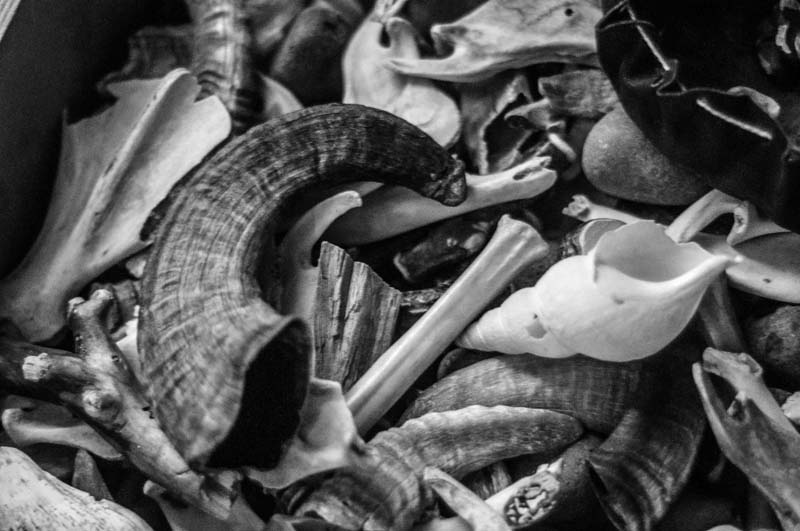

Fig 1 & 2: Found objects in Icelandic history, photographed at the The Settlement Exhibition in Reykjavík
Speaking to people in Iceland—to micro-historians, architects, anthropologists, folklorists, Medieval literary scholars, and artists—it became clear that beginning here offered me an opportunity to explore and unpack the nuances of what has been often proposed as the (unfair) binary of orality vs. writing or literacy. I don’t quite see a clear separation, nor do I wish to. It is in a fogginess that language, culture, architectural and other knowledge, and world-building are at their richest. Yet terms such as oral, written, etc., offer useful dialectical tools to think and self-debate. As I write this on my way to the Yukon, driving across the vast expanse of Canada, and in preparation for what I believe will be more about the oral dimensions of language and architectural knowledge, I mull over that placeholder binary of ‘oral vs. written’; not only about how it has been generally discussed in literature, but also how they intersect in the unique case of Iceland.


Fig 3 & 4: Reconstructed turf house complex, highlighting the kitchen (fig 4). Transported to and exhibited at the Skógar Museum


Fig 5 & 6: Turf house complex renovated by Hannes Lárusson at Austur-Meðalholt in South-Iceland
There are several dimensions of orality that I learnt about in making oral histories. Let us walk through a few. For one, the recitals of Medieval manuscripts and poetry, which were often communal activities performed as ways to get by the long winters of the land, when many folks had much time to pass. One can imagine the oratory resonances of stories told in the cozy interiors of the turf-house and long-house compounds that the early Icelanders were known to have inhabited. The transcription of poetry and copying of manuscripts is also known to have occurred during these long winters.2 Speaking to Icelanders of a certain age (now in their 60s and beyond, and many of who were raised in turf houses), I have also heard common recollections of entire families weaving, spinning, carving, and so on in the main common space (usually at the back of turf houses) during which times much storytelling also took place. These stories could be recreational, but could also be tales that inform, tell, and remind of significant aspects of the land, its people, and their history. Legends were often recited when family or others visited, or when larger numbers of a family were gathered together under the same roof. The oral dimensions of rhythms, pitches, and rhymes were especially important in recitation, as these could be powerful means to spread information. That is, oral language can often foreground not the content, but the means of propagation, especially at some events. This ‘aurality’ is also significant in recitations that had a significant role in dealing with grief, expressing joy, and so on. Such aspects can sometimes complement, but at other times also overwhelm what is exactly written and ‘meant.’ In my conversations, what has been most striking to me in this aspect of orality or the reciting of literature are the domestic spaces and cultural life that the descriptions of recital practices have invoked and portrayed. Even though I did not explicitly seek to research Icelandic traditional architecture, the spaces of the turf house emerged as an important aspect of the oral history making of the island.
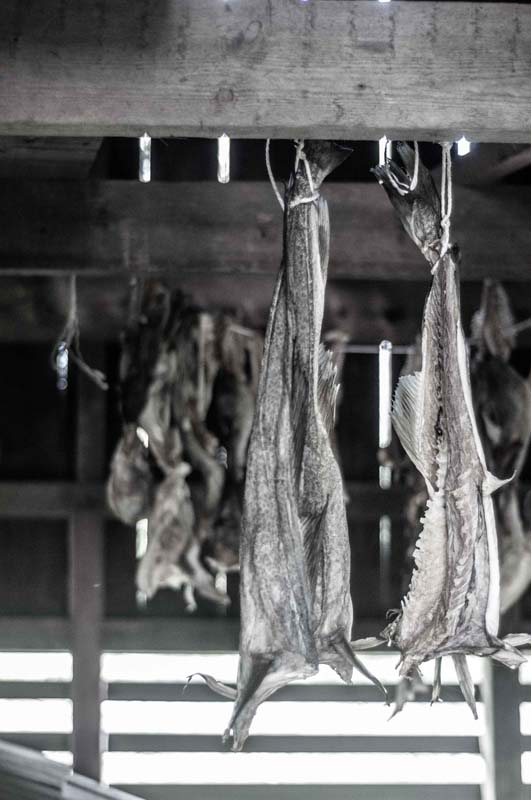
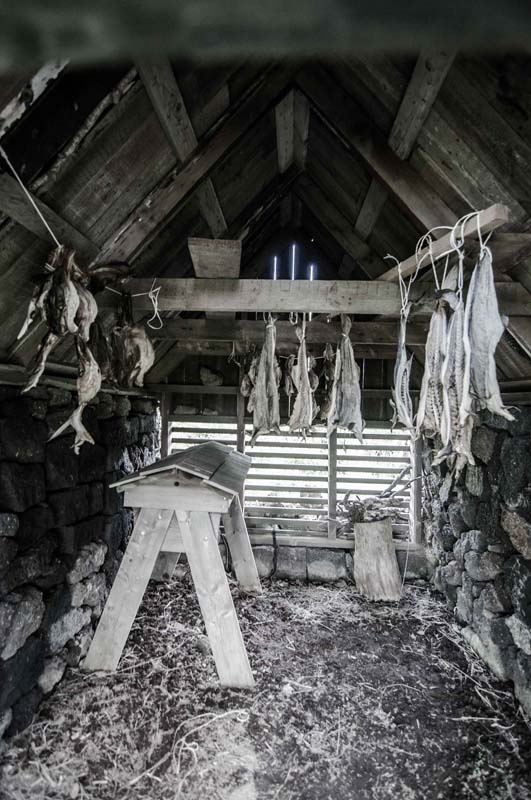
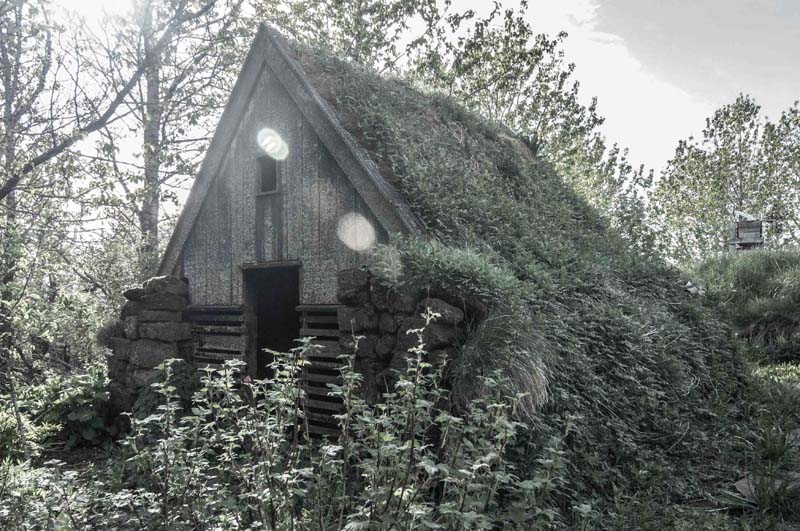
Fig 7, 8 & 9: Hut for drying cod fish in the turf house complex renovated by Hannes Lárusson, Austur-Meðalholt


Fig 10 & 11: Interior of the main/living room at the turf house complex renovated by Hannes Lárusson, Austur-Meðalholt
While turf houses were the dominant dwelling building type before the twentieth century, they declined suddenly during the middle of the twentieth century as Icelanders took to contemporary urban and sub-urban dwellings of the kind built across Scandinavia. Larger family and kinship structures also gave way to nuclear families. Today, many turf houses are found abandoned across Iceland, consumed and inhabited by moss, algae, and insects. Yet, these houses are very much alive in the collective memories of the generations who were raised in them. These are predominantly fond memories, I am told. Recently, there have been several efforts to restore turf houses, build new ones, and for a few, take to turf-house living again. There are turf house museums, of houses both ancient (for example, the reconstructed Viking dwelling at Ströng) and recent (for example, Hannes Lárusson’s turf house and museum near Selfoss, and others that teams led by him are renovating). Much of the ‘contents’ of the houses, the kinds of domestic spaces they afforded, and the techniques used to build them are chiefly inspired by the collection of oral histories that artists—and implicitly oral historians—such as Lárusson have embarked upon. As per Lárusson’s recollections of these oral history makings, it is after talking through many matters of everyday life, hearing about the significant events (births, deaths, holidays, etc.) that transpired in peoples’ lives, and talking through many clichés and their collective memories that some elders have been able to point to not only specific aspects of living in turf houses, but also the techniques and activities that encompassed that life centered around building them.3 It is through these oral histories that Lárusson collected that he was able to learn about the variety of building elements, materials, and techniques that building turf houses entailed. Different parts of the island also inspired different kinds of stories, as there were also significant cultural differences between, say, sheep herders upon the highlands and fishermen by the coast. In the case of the tools used to build the houses and the various techniques used, aspects of orality and oral histories here include being conduits through to tacit knowledge in ways that writing would not permit. Not to mention the colloquialism of an oral history interview that even permits significant bits of architectural information to emerge almost by accident in the telling of stories that may not have been explicitly about architecture. These are also tropes that I noticed in my own oral-history-making.
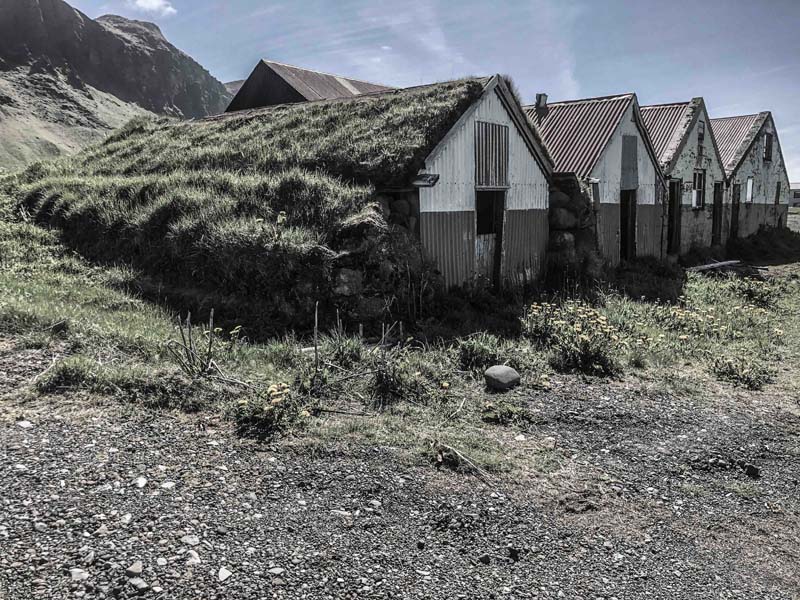
Fig 12: Abandoned turf house at Vik
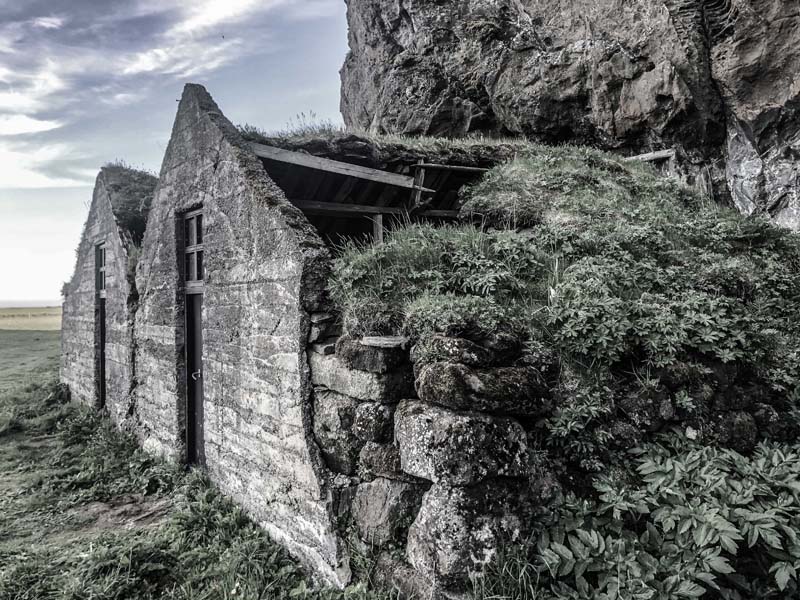

Fig 13 & 14: Abandoned turf house at Drangurinn í Drangshlíð
Another aspect of the oral epistemological format (pertaining to the divulging of information about architecture and the landscape) is the fact that stories often aided navigation. This was important in the history of Iceland, since many people seasonally moved, for example, from the highlands to the coast and back to switch between fishing, cattle raising, house-building, and so on. These stories might mean little in writing—that by its nature can exclude important cultural context—but could mean very much when told and remembered along the way. Even folklore and stories that featured creatures such as ogres, trolls, and other huldufólk (or hidden folk) contained important tips about wayfaring, times of the day and season to navigate certain landscapes, and other do’s and don’ts. These stories were effectively mnemonic devices. And given their oral format, they could be adapted to the relatively dynamic geo-scape of Iceland that still features active volcanoes, changing rock formations, flooding and shifting courses of rivers and surface water, varying places and levels of activities of hot springs, and so on. The different kinds of huldufólk in Icelandic mythology are associated with various kinds of landscape formations, for example, ogres with caves in the mountains, dwarves with big boulders, and elves and smaller creatures with cliffs and hedges. Thus, these stories and their protagonists become a record and an archive of various phases of landscape and environmental history itself. An example is the rock formation at Reynisfjara; the story is one of trolls who strode across the landscape by night (as they were usually believed to), but running late, met the light of day and was then petrified or turned into rocks. Recently, successful one-to-one comparative studies have also been undertaken showing correlations between geology and other records of environmental history with mythology or stories about the land.4

Fig 15: Basalt rock formations at Reynisfjara
Incidentally, folklore and myths continue to have an importance in wayfaring, even in current times. For example, many stories exist about recent road constructions being plagued, especially by construction equipment breaking, when the planning of roads did not factor in that the construction might be disrupting huldufólk dwellings5 (for example, the believed-to-be elven dwelling behind rock-cuts in Reykjavik. See fig 16.) I have been told about accounts of people even negotiating with huldufólk about how and where they might build. Attitudes toward such myths, legends, and stories range from disbelief and condemnation to staunch belief in seeing and communicating with these other-than-human species. Many harbor an agnostic attitude, that is, they don’t choose either extreme, yet, many are content to go a little out of their way so as to align with the appeasers of these folk. In Icelandic orally narrated stories and even in common-speak, I am told that these beliefs find surprising penetration and agency. For me, what is important is not whether these folk exist or not, but how the existence of these beliefs shape patterns of human behavior and imagination, which ultimately significantly impact the occupation and making of spaces and landscapes.
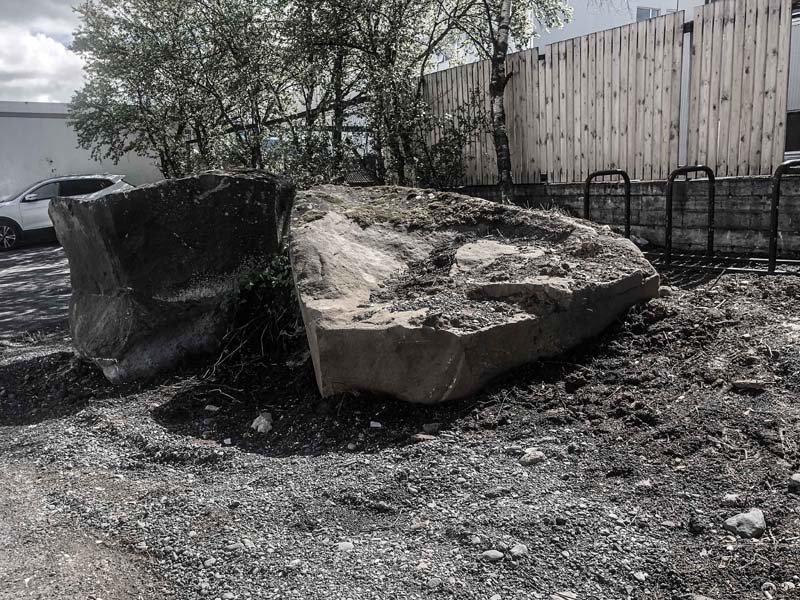
Fig 16: A rock in Reykjavik, which is believed to have halted construction activity6



Fig 17: Basalt rock formations at Reynisfjara, mirrored in the Hallgrímskirkja (fig 18) and the National Theater of Iceland (fig 19) buildings in Reykjavik.
A theme I want to highlight in these stories is that of animism. Not only are supernatural occurrences recorded by shaping protagonists in stories that correspond to them (the various huldufólk) but geological, natural, and environmental history are themselves understood by way of oratory practice and recital. As I have discerned also from knowledge-keepers of various First Nations in North-Western Canada, tall creatures of the forests who inhabit dual realms—physical and metaphysical or spiritual, human/animal and non-human/animal—have been claimed to have been witnessed by many of the peoples along the latitudes I am traversing. Perhaps this is a circumpolar theme wherein some similarities of landscape and climate are captured in stories in similar ways?
Iceland is a geologically young landscape, parts of it (south and east) younger than others (west). Driving through, one is immediately struck by how dynamic the floodplains of rivers are, changing locations of hot ground water eruption, the overwhelming of hardscapes by seasonal bursts of lichen and algae, and so on. In Iceland various place-names reify the existence of stories of the land, even if they are used and repeated in modes of low-attention or in passing references. Examples of place-names include: Egilsstaðir, referring to Egill, the first farmer of the land, as per one of the Sagas; and Barnafossar, a waterfall translating to ‘children fall,’ referring to where children (have) fallen. (I am sure that much is lost here in my understanding being a non-speaker of Icelandic!) There is a nature that emerges somewhere between these physical environmental phenomena and their understanding and representation through stories. Neither can be seen exclusively.
Animism literally carries through in architecture, too: in illustrating the techniques of building the turf house, Lárusson mentioned how blocks of earth were dried and then used akin to bricks (interspersed between blocks and layers of stone). Eventually, the roots of grass would grow through the earth/turf blocks, forming a homogenous but ‘alive’ building mass. And animism persists in the mainstream histories of architecture, too, implicitly rather than directly. For example, theories dealing with the notion of ‘empathy,’ which are well evident in the collection of essays edited by Mallgrave and Ikonomou.7 These address how we (humans) perceive architectural and other objects by projecting upon them human-centric tropes and properties. Wölfflin’s essay in this volume has become a seminal piece foregrounding the importance of ‘proportion’ in architectural history; what has been less appreciated, however, is that Wölfflin has conceived of the process of apportioning proportion in an ‘empathetic’ manner.8 A question that arises here is: why has empathy understood in this way excluded the notion of ‘care’ in (German) aesthetics, and generally in Western histories and theories of architecture? If we can see tropes of ‘human’ in buildings and other objects, how could we not extend them with human notions of care? Such are precisely the questions that I find Icelanders and the other Indigenous peoples I am talking to, to be implicitly asking. What is most significant about animism then is not only that certain cultures perceive inanimate objects to be animated or ‘spirited,’ but that there reemerges the potential to rethink our historical lineages in architecture, use the design methods and processes currently in use, but now twist them toward cultures of care.
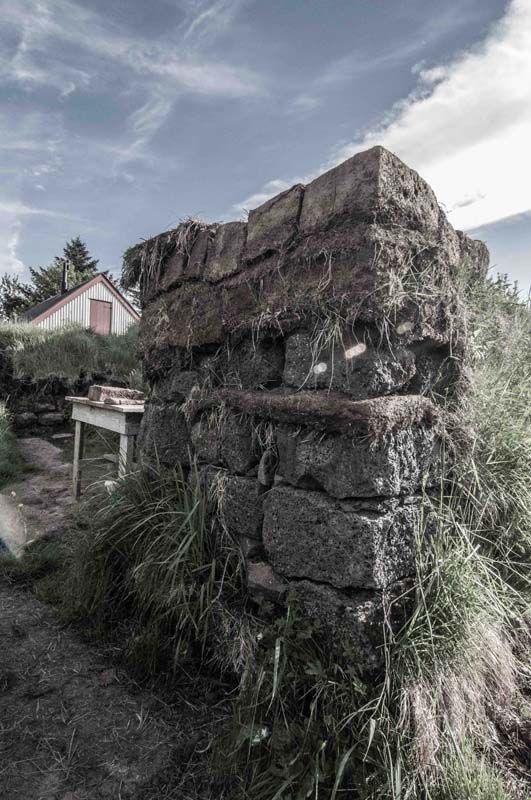

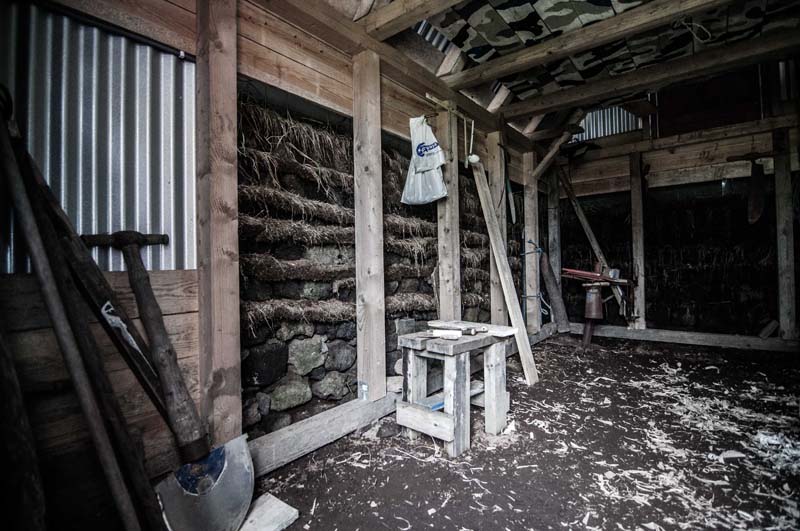
Fig 20–22: In-progress portions of the turf house complex being renovated by Hannes Lárusson at Austur-Meðalholt
What I have shared are recollections of words, ideas, and experiences that emerged in dialogs with several people, all muddled in my mind and re-composed along my slow journey from Eastern to Western Canada. My conversations in Iceland were not interviews, and neither were they trying to extract exact information. I have thoroughly enjoyed the casuality, colloquialism, and the incredible leeway for conversations to seamlessly drift. After all, is this not one of the wonders of orality: that one can seamlessly shift between thoughts and sentences, topics, intensities and emotions? Broken and grammatically incomplete sentences often seem not only fitting but at times even more informative. And these are often not closures or completed understandings of matters but rather questions and openings in knowledge that only probe further and deeper than one might have previously imagined.
As for credit in an oral history endeavor, I could not be any more grateful to everyone I spoke to and everyone who helped me find connections in Iceland.9 I have felt incredibly welcome and simply overwhelmed with their more than gracious engagement. Their love of their land and their generosity of sharing it with me have been absolutely heartwarming. So what must I credit with to these lovely people—everything!
1 Sigurður Gylfi Magnússon, Wasteland with Words: A Social History of Iceland (Reaktion books, 2012).
Magnusson uses the term ‘barefoot historian’ to refer to many common folk—fisherman, hunters, builders and so on, who wrote about their lives in their leisure—folk who, in other cultures in the 18th, 19th and even 20th century elsewhere in the world might not have been literate or in the habit of writing for leisure. See also by Magnússon; Sigurdur Gylfi Magnússon and David Olafsson, Minor Knowledge and Microhistory: Manuscript Culture in the Nineteenth Century (Routledge, 2016) and;
Sigurður G Magnússon, “The Continuity of Everyday Life: Popular Culture in Iceland, 1850-1940,” n.d.
3 I am very grateful to Lárusson for sharing his detailed thoughts and experiences of his oral history-making project in conversation with me, as well as ‘showing’ the rather tactile skills and knowledge involved in actually building turf houses (cutting and preparing turf, the design of tools, laying, curing, and so on.) This conversation was in some way, an oral history about other oral histories.
4 I am grateful to Rósa Þorsteinsdóttir and Emily Lethbridge for sharing these insights and details about their (individual) works.
See Emily Lethbridge, “Digital Mapping and the Narrative Stratigraphy of Iceland,” in Historical Geography, GIScience and Textual Analysis (Springer, 2020), 19–32 and;
Emily Lethbridge and Steven Hartman, “Inscribing Environmental Memory in the Icelandic Sagas and the Icelandic Saga Map,” PMLA 131, no. 2 (2016): 381–91.
5 Bryndís Björgvinsdóttir graciously shared these stories with me in conversation. For written accounts and description of various examples, see Bryndís Björgvinsdóttir and Svala Ragnarsdóttir, Krossgötur. Álfatrú, Álfabyggðir Og Bannhelgi á Íslandi, n.d. and;
Bryndís Björgvinsdóttir, “The Politics of Sacrosanctity and Elf Belief in Iceland,” Georgetown Journal of International Affairs, Encounters of Humans and Hidden Powers in Sacrosanct Places, n.d., https://gjia.georgetown.edu/2020/07/30/encounters-of-humans-and-hidden-powers-in-sacrosanct-places-part-i-the-politics-of-sacrosanctity-and-elf-belief-in-iceland/ and;
Bryndís Björgvinsdóttir, “The Urgent Environmental Implications of Traditional Icelandic Elf Beliefs,” Georgetown Journal of International Affairs, Encounters of Humans and Hidden Powers in Sacrosanct Places, n.d., https://gjia.georgetown.edu/2020/08/06/encounters-of-humans-and-hidden-powers-in-sacrosanct-places-part-ii-the-urgent-environmental-implications-of-traditional-icelandic-elf-beliefs/.
6 Bryndís Björgvinsdóttir showed this rock to me in person and has also written about it in her previously mentioned book Krossgötur. Álfatrú, Álfabyggðir Og Bannhelgi á Íslandi
7 Harry Francis Mallgrave and Eleftherios Ikonomou, eds., Empathy, Form, and Space: Problems in German Aesthetics, 1873–1893 (Getty Center for the History of Art and the Humanities, 1994).



Leave a commentOrder by
Newest on top Oldest on top